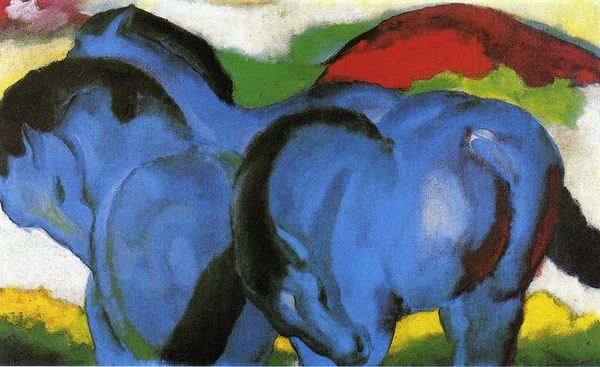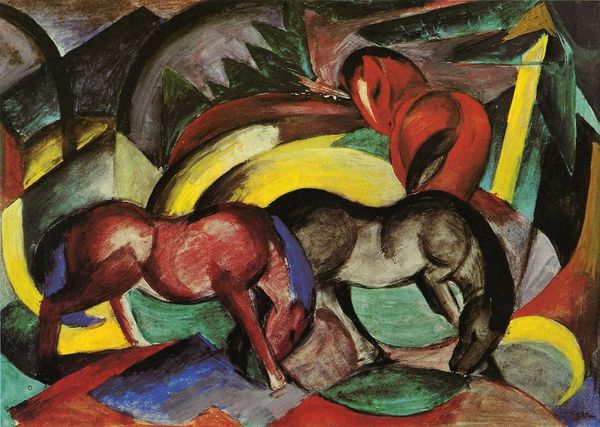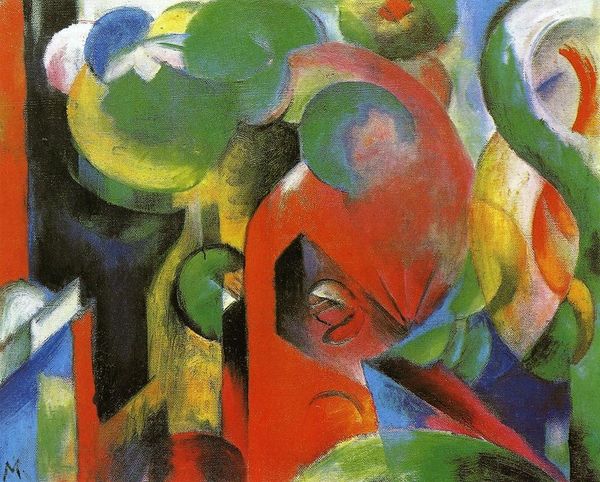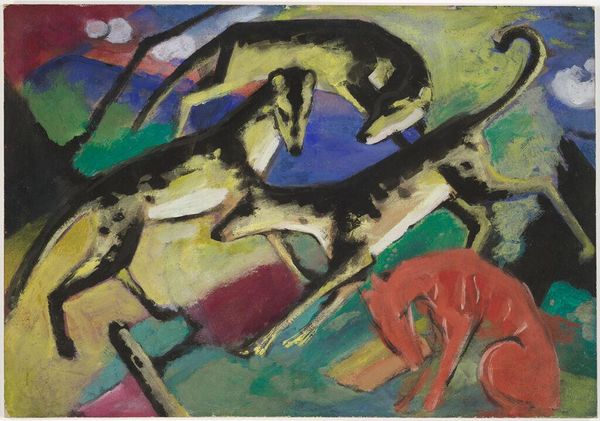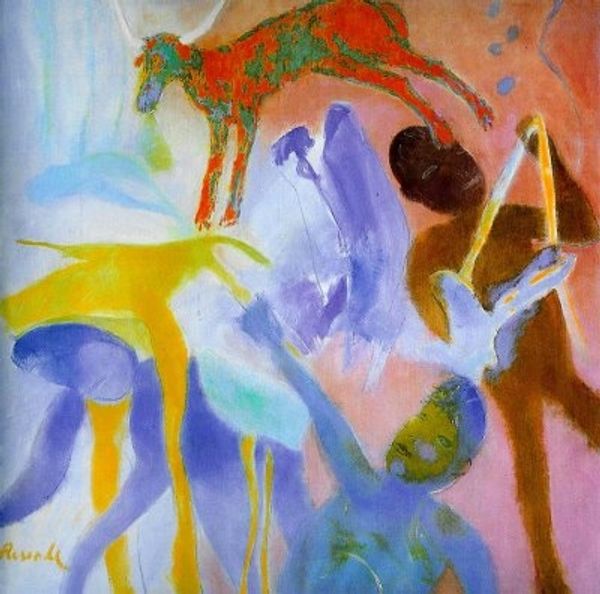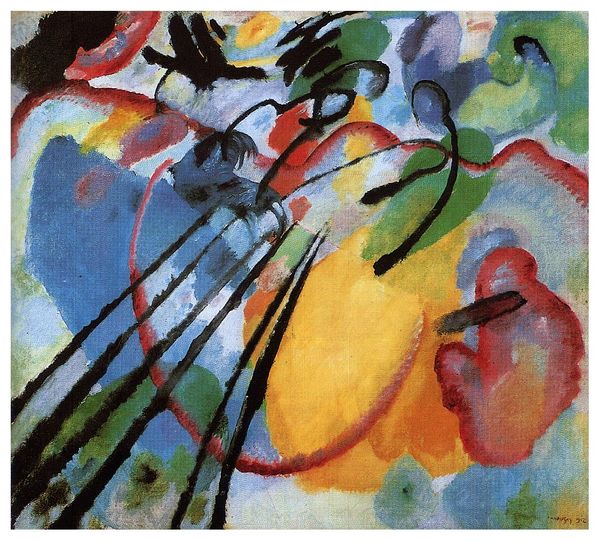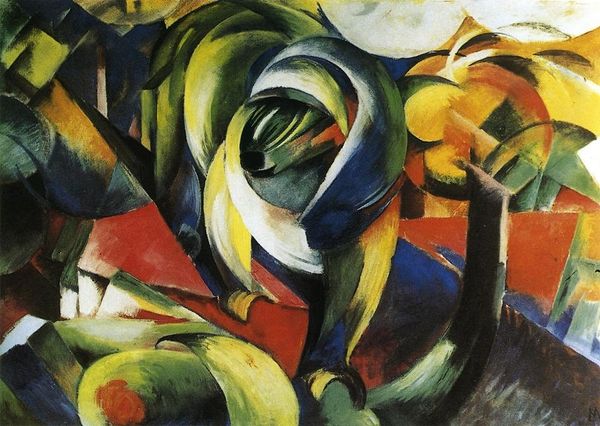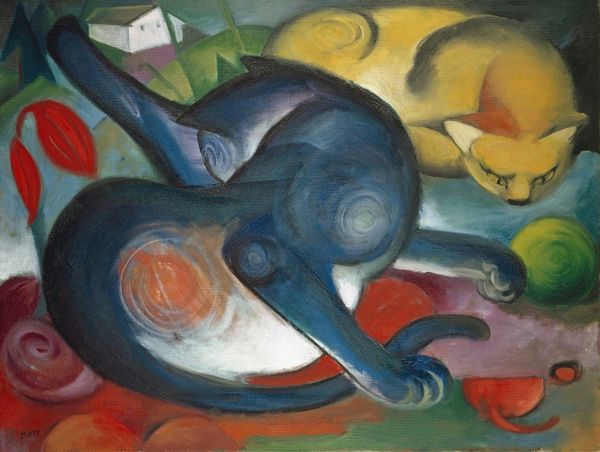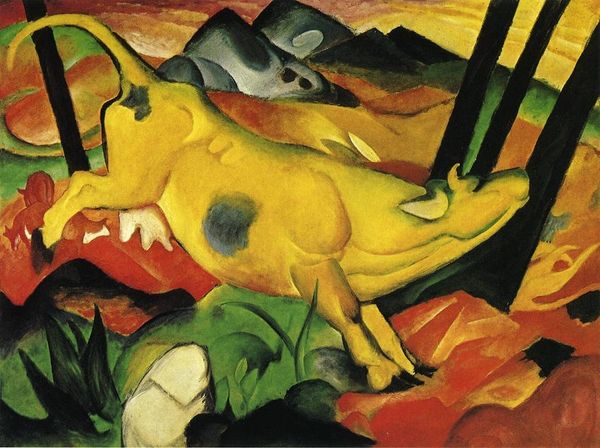
painting, oil-paint
#
abstract painting
#
animal
#
painting
#
oil-paint
#
landscape
#
figuration
#
oil painting
#
geometric
#
expressionism
#
animal portrait
#
horse
Dimensions: 73 x 58 cm
Copyright: Public domain
Curator: Well, what a striking use of colour. The texture looks quite rough, too, almost like he applied the oil paint directly. Editor: Yes, there's a primal quality here. Speaking of, we're looking at Franz Marc’s "Little Blue Horse" painted in 1912. It exemplifies his unique blend of Expressionism and abstraction. Marc was interested in creating a new symbolic language for painting, one based not on naturalism but on the spiritual essence he found in the natural world. Curator: Spiritual essence... That comes through in the materiality itself, wouldn't you agree? The colours clash and vibrate against each other—the bright reds, greens, yellows set against that intense blue. This piece screams "creation". He clearly wasn't using paint in a traditional way; this isn't some polite landscape we’re viewing. There's such a tangible struggle there, so much experimentation, from application to pigments. Editor: Absolutely, the emotional intensity is almost overwhelming, which speaks to a broader cultural shift that Marc was involved in. He co-founded Der Blaue Reiter—The Blue Rider—a group of artists seeking a spiritual and artistic renewal during a time of intense social and political change in pre-World War I Germany. Animals were also symbolic for him: emblems of innocence that represented an alternative moral path beyond societal hypocrisy. He wanted a complete paradigm shift, almost revolutionary. Curator: Then it begs the question—how were paintings like this produced, shared and ultimately received? Expressionism demanded new exhibition spaces outside academic conventions. So, looking back from a material perspective, "Little Blue Horse" marks how society began shifting. New ideas regarding aesthetics required reevaluating painting and audience interaction itself, with materiality carrying new radical messages. Editor: The intense colours may initially seem off-putting for many early viewers. It defied traditional representation and challenged conventional notions of beauty, as well as who or what the artist chose to put into focus—society's institutions responded to it. Expressionism shook foundations for many. But here we are. It also seems worth pointing out, with hindsight, that his belief in animals’ spiritual purity is now heavily interrogated post-anthropocene. Curator: Well, whether the spirituality still holds, I'm intrigued by his process; those brushstrokes suggest energy—an active artistic practice to communicate with, and change, his viewers. Editor: And what remains is something that continues to demand answers. It reminds me of the power that a single image has to condense and then to project ideas outward into culture.
Comments
No comments
Be the first to comment and join the conversation on the ultimate creative platform.
